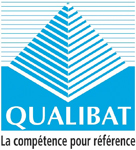Blockchain: What It Is, How It Works, Why It Matters

For example, delegated Proof of Stake (DPoS) is similar to PoS, but instead of all validators being eligible to create new blocks, token holders elect a smaller set of delegates to do so on their behalf. As you can see, changing the capitalization of the letters caused the output to be dramatically different. Hash functions are also one-way functions because it’s computationally infeasible to arrive at the input data by reverse engineering the hash output. If you’re a Mac user, you probably love the sleek desktop experience and how easy it is to use and understand.
Familiarize yourself with the blockchain development industry.

Because the transaction involves little human interaction, there is a lower risk of error. Each transaction must be confirmed and recorded by a majority of the network nodes, which makes it vanishingly difficult to manipulate or alter information. In a 2018 paper about how blockchain What is Blockchain technology can revolutionize international trade, the World Trade Organization (WTO) says that it can go far and beyond Bitcoin. The WTO predicts blockchain tech will be the beneficiary of “larger, focused investments” resulting in many successful models between 2022 and 2028.
- This means that users potentially have more direct control over their money.
- 2- What happens (as with peers in torrents) when some nodes are offline?
- As such, any recommendations or statements do not take into account the financial circumstances, investment objectives, tax implications, or any specific requirements of readers.
- Someone would need control of more than 50% of all the computers on the network to try to validate a block that’s been tampered with.
- When new data is added to the network, the majority of nodes must verify and confirm the legitimacy of the new data based on permissions or economic incentives, also known as consensus mechanisms.
The key to the blockchain’s immutability: The hash pointer
At that rate, it’s estimated that the blockchain network can only manage about seven transactions per second (TPS). Although other cryptocurrencies, such as Ethereum, perform better than Bitcoin, blockchain still limits them. Transactions on the blockchain network are approved by thousands of computers and devices. This removes almost all people from the verification process, resulting in less human error and an accurate record of information. Even if a computer on the network were to make a computational mistake, the error would only be made to one copy of the blockchain and not be accepted by the rest of the network.
A transaction is born
The original idea for blockchain technology was contemplated decades ago. A protocol similar to blockchain was first proposed in a 1982 dissertation by David Chaum, an American computer scientist and cryptographer. Scott Stornetta expanded on the original description of a chain of blocks secured through cryptography.
- IBM Blockchain solutions use distributed ledger technology and enterprise blockchain to help clients drive operational agility, connectivity and new revenue streams.
- For example, Santander Bank is experimenting with blockchain-based financial products, and if you were interested in gaining exposure to blockchain technology in your portfolio, you might buy its stock.
- In September 2022, Ethereum, an open-source cryptocurrency network, addressed concerns about energy usage by upgrading its software architecture to a proof-of-stake blockchain.
- Since this breakthrough, the technology has grown to surpass its cryptocurrency implications alone, introducing new data-oriented possibilities for countless industries.
- While not impossible to steal, crypto makes it more difficult for would-be thieves.
Why can’t data be changed on the blockchain?
- SHA-2 returns a hash value of 256-bits and is considered to be significantly more secure than MD5.
- Blockchain also facilitates secure sharing of medical data between healthcare providers, patients and researchers, and is even being recruited by genome-sequencing startups to help crack the genetic code.
- Blockchain is a list of records called blocks that store data publicly and in chronological order.
- Bitcoin was introduced in 2009 by someone or a group of people known as Satoshi Nakamoto.
- They are supposed to verify the identity of each customer and confirm that they do not appear on any list of known or suspected terrorist organizations.
- It’s no longer possible for malicious centralized parties to tamper with crucial data.


